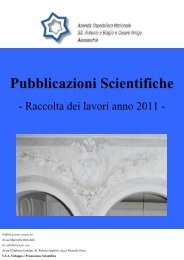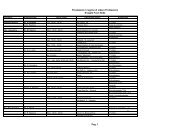Working Paper of Public Health Volume 2012 - Azienda Ospedaliera ...
Working Paper of Public Health Volume 2012 - Azienda Ospedaliera ...
Working Paper of Public Health Volume 2012 - Azienda Ospedaliera ...
You also want an ePaper? Increase the reach of your titles
YUMPU automatically turns print PDFs into web optimized ePapers that Google loves.
<strong>Azienda</strong> <strong>Ospedaliera</strong> Nazionale“SS. Antonio e Biagio e Cesare Arrigo”<strong>Working</strong> <strong>Paper</strong> <strong>of</strong> <strong>Public</strong> <strong>Health</strong>nr. 7/<strong>2012</strong>Table 10 shows the significance value <strong>of</strong> the F test in the ANOVA that is less than 0.001.Thus, we must reject the hypothesis H 0 that average incidence <strong>of</strong> breast cancer based on Agestandardizedrate (ASW) is equal across sets <strong>of</strong> countries in temperate and non temperatezone. Although the “variability within groups” is 59.85% <strong>of</strong> the total, the “variability betweengroups” displays a considerably high value, equal to 40.15%. Hence, the systematic effect <strong>of</strong>greater incidence <strong>of</strong> breast cancer based on Age-standardized rate (ASW) could be due tohigher GDP per capita that may spur behavior and style <strong>of</strong> life <strong>of</strong> populations that contributeto increase the breast cancer risk <strong>of</strong> woman.If ANOVA is repeated, mutatis mutandis, per three sets <strong>of</strong> countries: non temperate zone,temperate zone north and temperate zone south, results are in table 11.Table 11. ANOVA <strong>of</strong> countries <strong>of</strong> temperate zone North and South vs. Non temperate zonebased on ASR_W_2008Sum <strong>of</strong> Squares df Mean Square F Sig.Between Groups 15491.632 2 7745.816 18.257 .000Within Groups 20788.657 49 424.258Total 36280.290 51Note: ASR is the incidence <strong>of</strong> breast cancer based on Age-standardized rate (ASW);Table 11 confirms, de facto, previous results; the significance value <strong>of</strong> the F-test in theANOVA table that is less than 0.001: we must also here reject the hypothesis H 0 that averageincidence <strong>of</strong> breast cancer based on Age-standardized rate (ASW) is equal across these sets <strong>of</strong>countries in North/South temperate and non temperate zone. In this case “variability withingroups” is 57.30% <strong>of</strong> the total, whereas the “variability between groups” displays a highervalue than previous binomial case, equal to 42.70%. In addition the cumulative risk <strong>of</strong> breastcancer is higher in temperate zone about 6.35 (average between North and South) vs. 2.6 <strong>of</strong>countries in non temperate zone Hence, this analysis seem to display that the systematiceffect <strong>of</strong> higher incidence <strong>of</strong> breast cancer based on Age-standardized rate (ASW) could bedue to some drivers <strong>of</strong> socio-economic factors, mainly localized in richer countries that willbe discussed in the next section. In addition, ANOVA can provide an alternativeinterpretation <strong>of</strong> the theory <strong>of</strong> Oh et al. (2010) on the influence <strong>of</strong> latitude on breast cancer,focusing on socio-economic factors rather than biologic root causes.5. Discussion on socio-economic determinants <strong>of</strong> breast cancer incidenceStudies have estimated that approximately 50% <strong>of</strong> breast cancer incidence can be due togenetic, physiologic, environmental, or behavioral risk factors (alcohol consumption,13



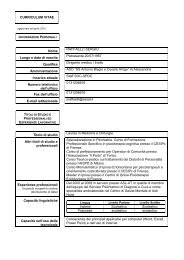
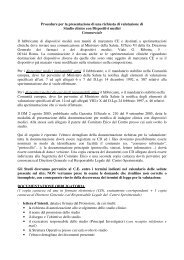

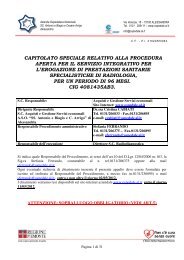
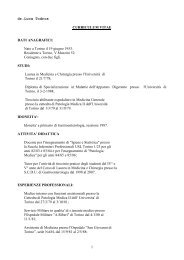
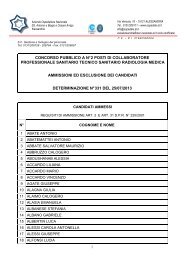

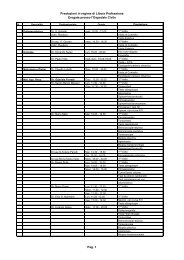


![[torino - 1] lastampa/urc/01 ... 26/10/09 - Azienda ...](https://img.yumpu.com/44058002/1/190x32/torino-1-lastampa-urc-01-26-10-09-azienda-.jpg?quality=85)

